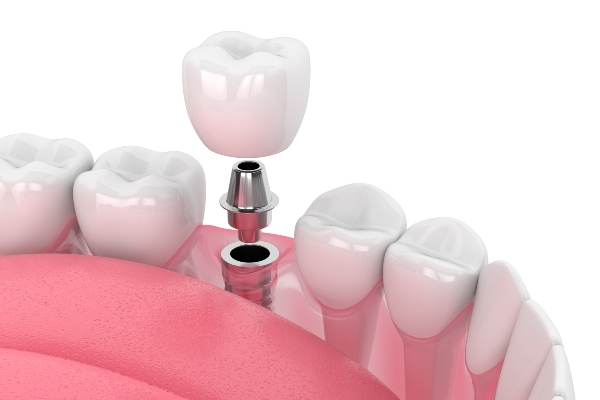 Patients looking to replace missing or failing teeth may benefit from dental implants, a long-lasting dental restoration that mimics the function and form of real teeth. Depending on the patient's oral health, implant dentists use two types of implants: endosteal and subperiosteal. In this blog, we will closely examine the different types of implants and when each is necessary.
Patients looking to replace missing or failing teeth may benefit from dental implants, a long-lasting dental restoration that mimics the function and form of real teeth. Depending on the patient's oral health, implant dentists use two types of implants: endosteal and subperiosteal. In this blog, we will closely examine the different types of implants and when each is necessary.
Types of dental implants
An implant dentist will use either endosteal or subperiosteal dental implants to restore a patient's smile. While oral surgery is necessary for both, each is placed differently concerning the jawbone. Explore the differences below.
Endosteal implants
Endosteal implants are preferable for patients who have enough healthy bone for the implants to attach to the jawbone. The implant is a biocompatible metal post (usually titanium) placed into the jawbone through surgery. The goal is to help the jawbone fuse with the implant to create a new tooth root. This process can take several months.
For a better picture, endosteal implants resemble metal screws on which a dental crown will sit to restore the tooth. (An abutment will help the crown attach to the implant.) Crowns can also restore damaged teeth, such as from tooth decay. They can also contain porcelain or ceramic materials to look like natural teeth.
These are the most common implants, typically recommended for patients with bridges or tried dentures.
Subperiosteal implants
Subperiosteal implants are beneficial when the patient does not have enough healthy bone for endosteal implants. The implant dentist will not place these into the jawbone; they will place them on top or right above it. Oral surgery is still required, as they must sit under the gums.
Subperiosteal implants are less common but remain a highly effective dental restoration. While many people have enough healthy bone to qualify for endosteal implants (i.e., through bone grafting), only some people wish to do so. Subperiosteal implants would be the clear option in these cases. They are also recommended for patients who cannot use traditional dentures.
How many implants do you need?
Both endosteal and subperiosteal implants can replace one or multiple teeth. It depends on how many teeth are missing and where they are missing in relation to each other.
An implant dentist may replace one or two missing teeth spaced out from each other (e.g., one missing tooth on the upper jaw and one on the lower jaw) with singular implants. Implants can be the most effective restoration in these cases, as a dental bridge would require the surrounding teeth to be ground down so that dental crowns can be placed on top for support. Neither an endosteal nor subperiosteal implant requires this. In addition, by opting for an implant, the patient can keep more of their natural teeth.
Multiple implants are recommended when a few adjacent teeth are missing. Implant-supported dental bridges (instead of bridges supported by dental crowns on natural teeth) can be used to fill larger gaps. If all the teeth are missing from the upper or lower jaw, full-arch prosthesis may be recommended. This option is a fixed denture cemented in place by four to six dental implants.
Consult an implant dentist
Many factors go into choosing the right type of implant for each patient’s needs. During a consultation, an implant dentist can discuss the options and basic types of implants in greater detail. To get started, call our office.
Request an appointment or call Paramount Dental Care & Specialty at 562-450-1261 for an appointment in our Long Beach office.
Related Posts
Our implant dentist is here to guide you through the process of getting dental implants, from your initial consultation to the surgical installation of your implant. Understanding how the process works allows you to ask the right questions during your appointment.An implant dentist spends a large fraction of their time placing implants. Implants are screws/rods…
There are many types of dental professionals; however, you will need specialized care when it comes to dental implants. An implant dentist specializes in installing dental implants and treating conditions caused by or affecting them. Here is a list of conditions requiring an implant dentist’s care.Dental implants are a great solution for missing teeth. They…
Dental implants are one of the best and most permanent ways to replace missing teeth, but you must follow a lengthy and intricate process. With the help of an implant dentist, you can go through the lengthy process with ease, ensuring the procedure is a success. This article will review the process one can expect…
